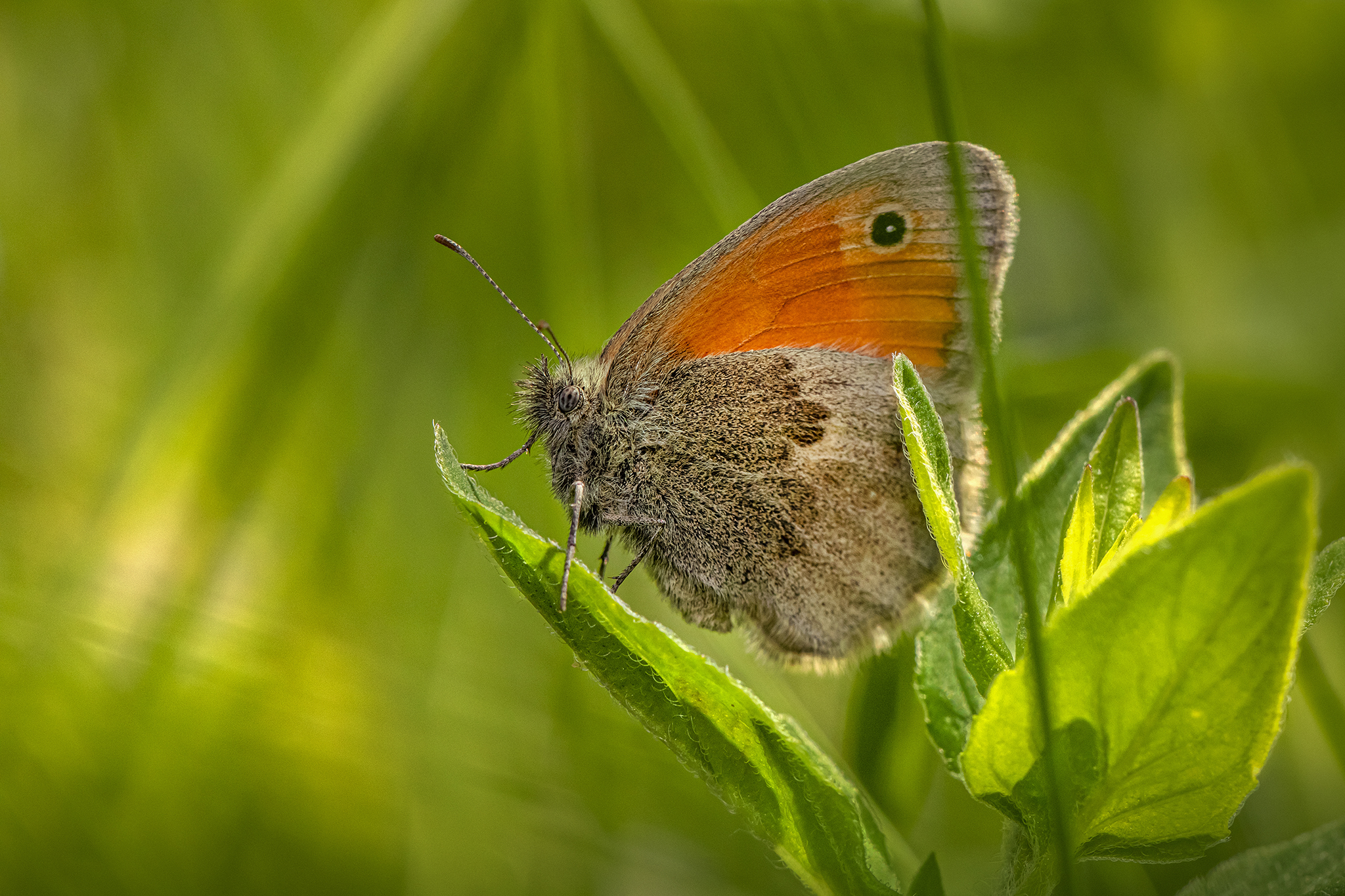The Meadow Brown (Maniola jurtina) is a charming butterfly species found across Europe, Asia, and parts of North Africa. With its earthy tones and subtle beauty, this butterfly graces meadows, grasslands, and open spaces with its presence, adding to the tapestry of biodiversity in these habitats.
One of the most recognizable features of the Meadow Brown is its wings, which boast a warm, russet-brown coloration, often adorned with intricate patterns of eyespots and markings. These markings serve both decorative and functional purposes, helping to camouflage the butterfly among the grasses and providing protection from predators.
The Meadow Brown is a resilient and adaptable species, capable of thriving in a variety of habitats, from coastal dunes to upland meadows. It is often seen fluttering low to the ground, where it feeds on the nectar of various wildflowers and grasses, contributing to the pollination of these plants.
During the breeding season, male Meadow Browns engage in territorial behaviors, patrolling their territories and engaging in aerial pursuits to defend their territory and attract mates. Females lay their eggs on grasses, where the larvae, or caterpillars, feed and develop before pupating and emerging as adult butterflies.
As with many butterfly species, the Meadow Brown faces threats from habitat loss, agricultural intensification, and climate change. Conservation efforts aimed at preserving and restoring grassland habitats are essential for ensuring the continued survival of this enchanting butterfly and the diverse array of species that depend on these ecosystems.
Through appreciation, conservation action, and habitat stewardship, we can protect the Meadow Brown and other grassland butterflies, ensuring that future generations will continue to enjoy the beauty and wonder of these charismatic insects.
Views: 1317
Subscribe to the newsletter:
